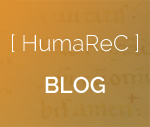- Written by Sara Schulthess
- Hits: 7358
Article in Journal for Data Mining and Digital Humanities
An article from our team is now published in the special issue of Intertextuality in Ancient Languages of the Journal for Data Mining and Digital Humanities.
Clivaz, C., Schulthess, S., Sankar, M., “Editing New Testament Arabic Manuscripts on a TEI-base: fostering close reading in Digital Humanities”. Journal of Data Mining and Digital Humanities, Episciences.org, 2017, Special Issue on Computer-Aided Processing of Intertextuality in Ancient Languages. url
This article covers the development of the digital edition Tarsian, which was achieved during the previous project (FNS 143810).
As we are still working with the tool EVT on XML TEI basis, this publication is also of interest for the present project HumaReC.
Here the abstract of the article:
If one is convinced that "quantitative research provides data not interpretation" [Moretti, 2005, 9], close reading should thus be considered as not only the necessary bridge between big data and interpretation but also the core duty of the Humanities. To test its potential in a neglected field – the Arabic manuscripts of the Letters of Paul of Tarsus – an enhanced, digital edition has been in development as a progression of a Swiss National Fund project. This short paper presents the development of this edition and perspectives regarding a second project. Based on the Edition Visualization Technology tool, the digital edition provides a transcription of the Arabic text, a standardized and vocalized version, as well as French translation with all texts encoded in TEI XML. Thanks to another Swiss National Foundation subsidy, a new research project on the unique New Testament, trilingual (Greek-Latin-Arabic) manuscript, the Marciana Library Gr. Z. 11 (379), 12th century, is currently underway. This project includes new features such as "Textlink", "Hotspot" and notes: HumaReC.
You can find the complete article online in open access on the website of the revue.
